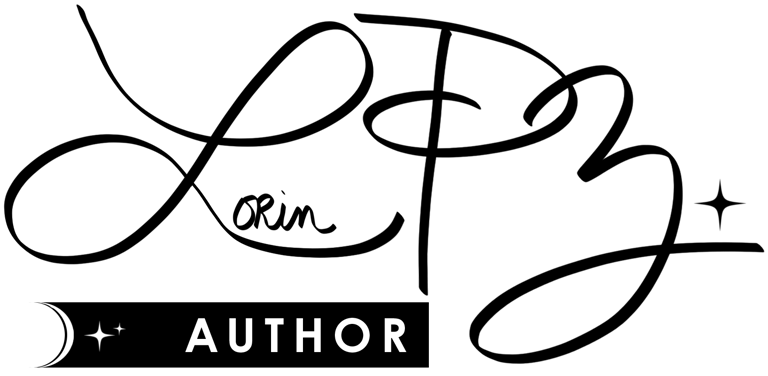Indie vs. Traditional Publishing: Finding the Path That’s Right for You
Choosing between indie publishing and traditional publishing is one of the biggest decisions you’ll make as an author. Some writers never face the choice as landing a traditional deal is notoriously difficult, while others believe indie publishing is a “backup plan” after rejection. Here’s the truth: indie publishing is not a failure. In many cases, it’s a power move; one that gives you full control of your work, career, and creative vision. I’ve experienced both sides: traditional publishing and indie publishing. And I can tell you, they each have pros and cons.
Lorin Petrazilka
8/14/20253 min read


⚖️ My Experience with Traditional Publishing
My first traditional project was an anthology. I had zero creative control, felt disconnected from the process, and, frankly, I don’t even talk about that book anymore.
My second shot came when a publisher expressed interest in my Vale Born fantasy romance series. I was thrilled—until I learned they wanted me to cut a sizeable portion of the story to fit their 65,000-word format. The section they wanted to remove was the very reason I wrote the book in the first place.
Lesson learned: If a publishing deal compromises your why, it’s not the right deal for you.
On top of that, I didn’t like their cover designs, and they weren’t open to my input. This is pretty standard with traditional; the author doesn't get to choose or weigh in. As an artist, that was a deal-breaker.
🚀 Why I Chose Indie Publishing
By going indie (technically, under the small press imprint, Fatebound Books LLC), I retained:
Creative control over content and covers
Full rights to my work
The ability to choose my editor, formatter, and collaborators
That said, indie publishing also means full responsibility:
Editing, formatting, ebook functionality—all on you
Vetting contractors and ensuring quality
Handling every aspect of marketing
And yes, it can get messy. My very first book almost became a disaster due to bad formatting. I had to pay for a second formatter and reprint ARC copies—costly, but worth it for a beautiful final product.
And depending on how you indie publish, your books can be available in all of the same places as those traditionally published books. My books are available at all the major retailers, in libraries, plus I have the ability to sell my own copies (right here on my website store actually!) If you're a self-starter and ready to do your own legwork and research, indie may be a good option for you.
💡 The Marketing Myth
There’s a common belief:
“If you’re traditionally published, they’ll handle your marketing. If you’re indie, it’s all on you.”
The truth? Unless you have a huge traditional deal, you’re still responsible for most of your marketing. I once did a Barnes & Noble signing with a traditionally published author who didn’t realize he had to sell his own book—despite earning only pennies on the dollar in royalties.
Meanwhile, at that same event, I earned full royalties on every book I sold. The fact is, only the big bigs are going to get the big marketing: those banner ads on the well-known bookseller websites, or fancy end caps and table displays at the big bookstores. Those cost money, and publishers only pay up for a sure thing.
🐢 The Pace Problem
Traditional publishing is slow. First, you query agents (often for months or years), then your agent submits your book to publishers to try to get a publisher to buy it (this is called being "on sub" in the industry). When/if the book is bought by a publisher, then the publisher prepares it for release. This means that getting a lit agent is not a guarantee that they can sell the book. The process can take years—potentially missing the moment when your genre is hot. But what's the pro, you ask? They pay you up front when the book is sold to the publisher. You get paid an advance, (less the agent commission, usually 15% of both the advance and the royalties) and you spend no money on editors, cover designers, formatters, etc. This advance is exactly that, an advance on royalties earned. meaning you will not make royalties until that advance is reached through book sales.
📊 A Reality Check in Numbers
Out of 1,000 people who start writing a book, only 30 finish.
Out of those 30, only 6 publish—by any method.
That’s 0.6% of starters who make it to publication.
No matter which route you choose, reaching this stage is a huge accomplishment worth celebrating. 🎉
🚫 A Warning About Vanity Presses
Vanity presses are predatory companies that charge authors high upfront fees for subpar services. If a company reaches out to you unsolicited, research them—search their name with “scam” or “reviews” before signing anything. Do your research diligently.
🛠️ If You Want to Try Traditional
Use QueryTracker.com to stay organized
Submit to one agent at an agency who is asking for your genre on their MSWL (Manuscript Wish List)
Follow submission guidelines exactly
Write a killer query letter using the Hook, Book, Cook format (3 short paragraphs: grab attention, pitch the book, introduce yourself)
Always address the agent by name—spelling counts
Following these steps puts you ahead of half the competition, because many authors skip them. I've been told directly by a literary agent: anyone who doesn't follow these things doesn't even get looked at.
🌟📚 Want to Know my Process for Publishing?
Sign up to stay informed when I have a new post! In my next post, I'll be detailing the steps I go through and offering advice for authors to publish their books independently.
✨ Final Thoughts
Whether you go indie, traditional, or hybrid—choose the path that aligns with your vision and preserves your passion for the story. The “right” choice is the one that keeps your why intact.
💬 Question for You: Which publishing path are you leaning toward—and why? Share in the comments!
